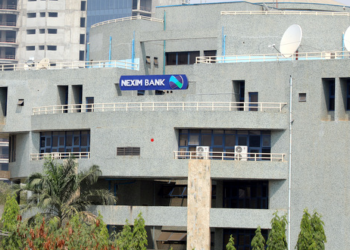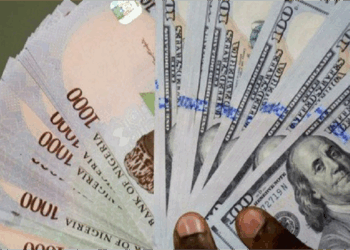It is amazing how everyone looked forward to 2020 as the “magic year” only for the yearning aspirations to be undermined by the unsuspecting outbreak of the novel coronavirus; COVID-19, which has infected over 17 million people, with almost 700,000 mortalities, globally. With unprecedented response, coordinated and fragmented, aimed at stemming the spread ahead of a vaccine, most economies have seen the worst economic shock since the global depression. Whilst the International Monetary Fund (IMF) expects global economy to shrink 4.9% in the year, it posits more adverse impact on emerging and frontier markets. For instance, Nigeria, South Africa and Brazil are projected to record negative 5.4%, 8.0% and 9.1% GDP growth respectively. In developed countries, accommodative monetary policies are complementing fiscal efforts in mitigating the shock on economies, albeit fiscal authorities in Africa and most developing region are stuck between a rock and a hard surface, as there is very limited room for fiscal accommodation. Indeed, as commodity prices plummet and traditional taxes wane, given weak aggregate demand and generally low economic activities, African governments are increasingly seeking alternative revenue streams to keep governance afloat and hopefully tame rising debt profiles. Like peers in Europe and Americas, African central banks have loosened monetary policies, easing interest rates to stimulate local credit to all economic units – household, businesses and the government, particularly as foreign capital withers. Whilst empowering the Central Bank of Nigeria (CBN) to leverage unorthodox measures to counteract the unending exchange rate pressures, Nigeria’s monetary policy committee reduced benchmark rate by 100 basis points to 12.5% at its May meeting. More so the CBN has used varying administrative measures, including the prohibition of non-bank domestic investors from open market operations (OMO) and the regulation of minimum loan-to-deposit ratio for banks, to lower interest rates. Observably, yields on sovereign securities have declined an average of 500bps across maturities, with the most impact being on the short-dated securities – treasury bills; the 90-day, 180-day and 360-day treasuries were printed at 1.2%, 1.5% and 3.4% on 29 July, 2020. Quite exciting that yields on the FGN Bonds are down to single-digit, setting new record-low, as yields come-off peak levels to trade at decade-low levels, last seen in 2009/10 accommodative monetary policy cycle. Notably, the 10-Year FGN Bond closed at 6.0% at the last auction on 22 July 2020, with the 30-Year Note also printing at 9.95%.
READ ALSO: Top 3 rating agencies in Nigeria and what they do
Taking stocks of changing rate environment, are there gainers or losers?
With Nigeria’s debt service burden rising towards unsustainable levels, the low-interest rate may help to ease the fiscal pressure, as it provides an opportunity for the government to refinance maturing debt obligations at lower interest rate, thereby partly mitigating the risk of reaching a fiscal cliff. Corporates, particularly SMEs, may leverage the current rate environment to reduce cost of capital, thereby improving profit margins, even so, other macroeconomic factors may mask such potential upside to margins, as depreciating Naira and consistent uptick in headline inflation may be eroding the benefit of lower financing cost. Whilst the government and corporates (with net debt exposures) are clear gainers, who bears the cost? Juxtaposing the current yield environment with rising headline inflation, reinforces the negative real return on Naira-denominated assets, a risk which continues to discourage savers and investors in Naira-denominated financial assets. Whilst the FGN 12.98% March 2050 (the 30-year sovereign bond) trades at an effective yield of 9.76%, headline inflation printed at 12.56% in June, thus reinforcing the negative return on Naira-denominated assets. The impact of a negative real return is particularly harsh on pension and life insurance funds, given that the opportunity cost of a negative real return is perhaps the highest for these class of investors. For Retiree Savings Accounts, the negative real return translates to lower pay-out to pensioners, thus implicitly reducing their standard of living. Given that annuity payments are fixed, the opportunity cost of a low-interest rate environment is borne by the life insurance firm, resulting in major underwriting losses for most life insurance firms whilst also making new annuity offerings less attractive to new clients.
READ MORE: CBN disburses N10.5 billion out of N100 billion credit to healthcare industry
Here lies the risk…
Pundits suggest that the low-interest rate environment may persist through the next economic cycle, thus informing the appetite of some fund managers to adjust to this low rate environment as the new normal. Albeit there are contrarians whose perspectives are shaped by concerns on Naira stability and the need to increase interest rate in the near term to attract foreign portfolio investments and stem the rising demand for foreign currency. The uncertainty on interest rate outlook brings to fore the dilemma of fund managers, who are stuck in between the risk of reinvesting maturing assets at lower returns should the low interest rate environment persist and the risk of piling up low-return assets which may undermine relative performance of the funds should interest rate rises. Beyond the reinvestment risk, there are salient but perhaps more pertinent risks, such as the risk of adverse selection, which may result from probable aggression of fund managers to seek higher yields. With leading indicators suggesting that Nigeria may once again slip into recession over the next few quarters, credit ratings, guarantees and other credit enhancements become pertinent in appraising investment opportunities.
READ ALSO: Nigeria is in a weak financial position to absorb recession shocks —Bismark Rewane
Beyond the default, the rationale for ratings and credit enhancements
As COVID-19 continues to ravage economies and markets, fiscal positions are pressured, and corporates’ finances are being challenged. Given lower economic activities and attendant reduction in aggregate demand for most goods and services, there has been significant changes in the fundamentals of most sectors and businesses. Hence, the next few months may witness notable credit rating downgrades of sovereigns and corporates, to reflect the inherent risks in the credibility of the Sovereigns and entities as well as their instruments. Whilst fund managers’ appetite for high yield notes may have risen, credit downgrade risks may trigger notable liquidity and price risk in lower-rated and borderline investment grade instruments, as fund managers may be forced to exit or reduce exposures to these notes, should there be a downgrade in the current credit ratings of high yield Notes. More so, as the probability of default rises, so will the required impairment charge on lower-rated bonds rise. Expectedly, the impairment charge on all non-sovereign instruments will rise going forward, irrespective of performance, as the relatively weak macroeconomic environment and waning fundamentals of businesses highlight the higher probability of default on these instruments. Notably, it would be a double whammy for a fund manager to be exposed to a defaulting obligor.
READ MORE: How fund managers can help in period of low yield
Given that securities regulation permits rating agencies to elicit non-public information from borrowers, the perspective of the agencies, expressed in the form of a credit rating is thus a big deal, as it provides a summary of a detailed analysis based on public and otherwise “insider information”, beyond what is practicable by any other analyst (either buyside or sell-side), whose analysis are undermined by information asymmetry. Hence, if truly, rating agencies assess the creditworthiness of a borrower and the rating constructs represent advice to prospective investors about the default and inherent risks that an instrument portends, it means different credit ratings present salient messages beyond default risks. For instance, the Pension Commission limits pension fund managers’ exposure to lower-rated bonds and borderline investment grade assets (“BBB”), as such instruments portend higher price risks, which may be triggered by a rating downgrade. Thus, as fund managers navigate the dilemma of the low interest rate environment with the appetite to deliver superior returns on investments, it is pertinent to pay due attention to credit ratings. That been said, credit enhancements, such as guarantees may succinctly mitigate the risks associated to an otherwise lowly-rated instruments, as the guarantor warehouses the risks, thereby providing requisite mitigant for investors, who would otherwise be exposed to the borrowers’ high risk. Credit enhancements, such as irrevocable and unconditional guarantees, provide a second line of defence for investors in uncertain periods, thereby mitigating all associated risks to an otherwise high-risk instrument. With the empirical evidence of sovereign defaults and increasing debt service burden of emerging market governments, guarantees from development finance institutions or multilateral-backed institutions may become more attractive than the full faith and credit of some Sovereigns.
READ ALSO: Fitch Rating agency affirms AfDB’s AAA rating with stable outlook
How much attention are fund managers paying to imminent rating cliff?
Fund managers are averse to negative surprises and adverse events, yet it is uncommon to see investors pay relevant attention to probable trigger events. COVID-19 pandemic has triggered a lot of uncertainties, thus giving rise to certain risk scenarios with attendant consequences. Whilst evolving circumstances may prompt significant rating downgrade, rating agencies have over the past decade improve awareness on the criteria used to establish or revise ratings, therefore most rating triggers can, to a large extent, be anticipated and mitigated, if due attention is paid to the fundamentals of the instruments. According to a foremost credit rating agency, Standard’s and Poor’s (S&P), the current pandemic has triggered an all-time high risk of rating downgrade, with 1,287 issuers on a rating downgrade warning, 25% more than the statistics during the 2008 financial crisis, despite it already downgraded the rating of about 700 issuers. In total, some two-third of the issuers (corporates and countries) monitored by the rating agencies are said to be at risk of rating downgrade. With the downgrade of global companies like Ford, Kraft Heinz, Renault, Delta Air Lines, and Macy’s amongst others, fund managers are increasingly concerned on rating exposure of their portfolios. Notably, there may be significant erosion to credit fundamentals in the quarters ahead, particularly for low-rated issues as poor earnings and cash flows, protracted challenges in managing cost structures, and market volatilities impair the ability of issuers to service debt obligations, without external support. S&P ranked hospitality, financials, consumer goods, utility, and oil & gas as the most exposed sectors to rating cliff, as the fundamentals of the sectors continue to wane, with resultant triggers for rating downgrade. Whilst rating downgrade may not be common in Nigeria, recent events and increasing proactive posture of rating agencies may have increased the risk of rating downgrades in the local market. Hence, it is pertinent for fund managers to balance the appetite for returns with all relevant risks, including the salient risks, inherent in low-rated, high yield instruments. More so, it is time to turn attention to credit enhancements, which provide secondary line of defense, if the ability of the primary obligor is impaired.






















